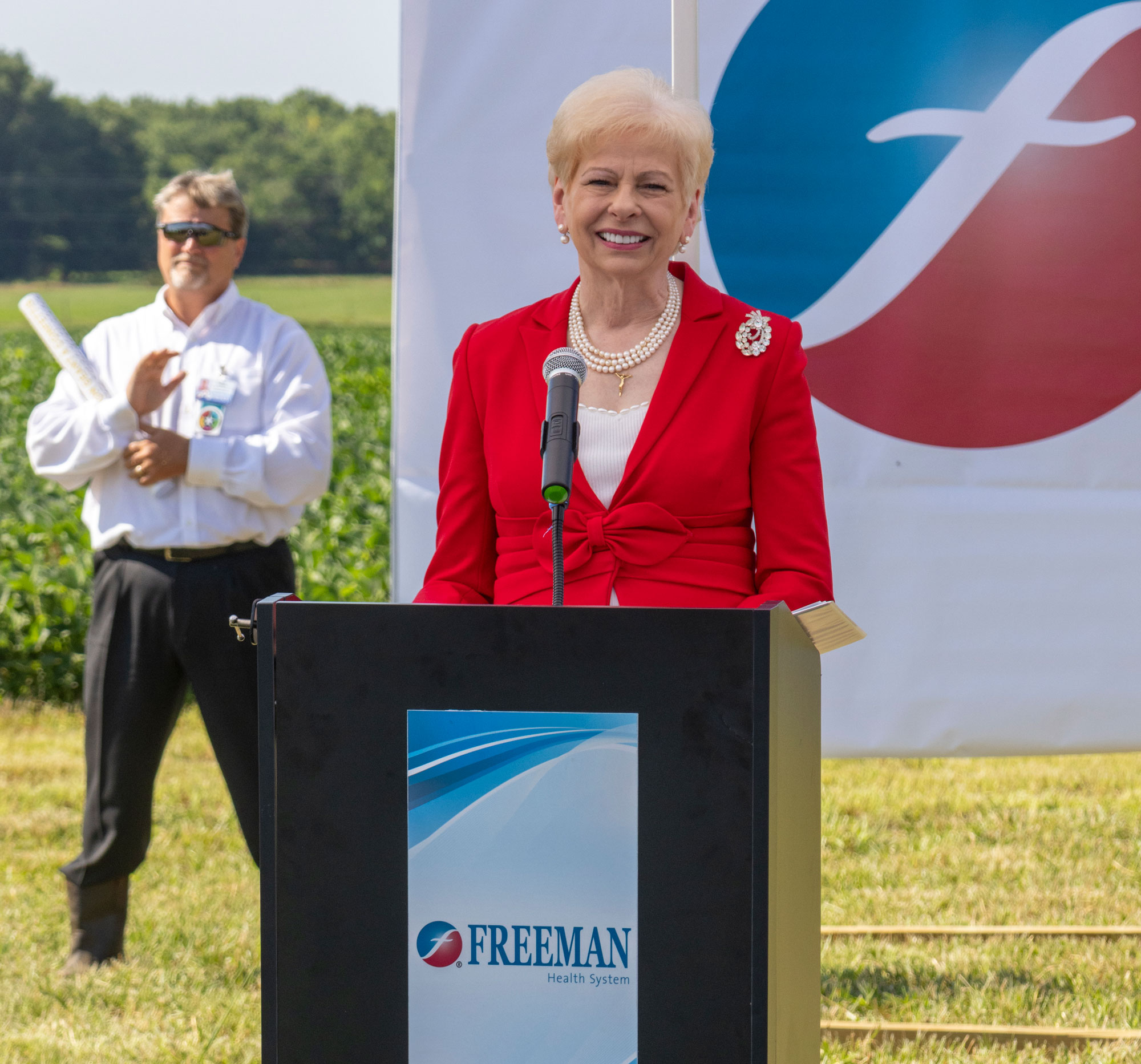Federal officials resolved more than a decade ago to crack down on whopping government overpayments to private Medicare Advantage health insurance plans, which were siphoning off billions of tax dollars every year.
But Centers for Medicare & Medicaid Services officials have yet to demand any refunds — and over the years the private insurance plans have morphed into a politically potent juggernaut that has signed up more than 33 million seniors and is aggressively lobbying to stave off cuts.
Critics have watched with alarm as the industry has managed to deflate or deflect financial penalties and steadily gain clout in Washington through political contributions; television advertising, including a 2023 Super Bowl feature; and other activities, including mobilizing seniors. There’s also a revolving door, in which senior CMS personnel have cycled out of government to take jobs tied to the Medicare Advantage industry and then returned to the agency.
Sen. Chuck Grassley (R-Iowa) said Medicare Advantage fraud “is wasting taxpayer dollars to the tune of billions.”
“The question is, what’s CMS doing about it? The agency must tighten up its controls and work with the Justice Department to prosecute and recover improper payments,” Grassley said in a statement to KFF Health News. “Clearly that’s not happening, at least to the extent it should be.”
David Lipschutz, an attorney with the Center for Medicare Advocacy, a nonprofit public interest law firm, said policymakers have an unsettling history of yielding to industry pressure. “The health plans throw a temper tantrum and then CMS will back off,” he said.
Government spending on Medicare Advantage, which is dominated by big health insurance companies, is expected to hit $462 billion this year.
New details of the government’s failure to rein in Medicare Advantage overcharges are emerging from a Department of Justice civil fraud case filed in 2017 against UnitedHealth Group, the insurer with the most Medicare Advantage enrollees. The case is pending in Los Angeles. The DOJ has accused the giant insurer of cheating Medicare out of more than $2 billion by mining patient records to find additional diagnoses that added revenue while ignoring overcharges that might have reduced bills. The company denies the allegations and has filed a motion for summary judgment.
Records from the court case are surfacing as the Medicare Advantage industry ramps up spending on lobbying and public relations campaigns to counter mounting criticism.
While critics have argued for years that the health plans cost taxpayers too much, the industry also has come under fire more recently for allegedly scrimping on vital health care, even dumping hundreds of thousands of members whose health plans proved unprofitable.
“We recognize this is a critical moment for Medicare Advantage,” said Rebecca Buck, senior vice president of communications for the Better Medicare Alliance, which styles itself as “the leading voice for Medicare Advantage.”
Buck said initiatives aimed at slashing government payments may prompt health plans to cut vital services. “Seniors are saying loud and clear: They can’t afford policies that will make their health care more expensive,” she said. “We want to make sure Washington gets the message.”
AHIP, a trade group for health insurers, also has launched a “seven-figure” campaign to promote its view that Medicare Advantage provides “better care at a lower cost,” spokesperson Chris Bond said.
Revolving Door
CMS, the Baltimore-based agency that oversees Medicare, has long felt the sting of industry pressure to slow or otherwise stymie audits and other steps to reduce and recover overpayments. These issues often attract little public notice, even though they can put billions of tax dollars at risk.
In August, KFF Health News reported how CMS officials backed off a 2014 plan to discourage the health plans from overcharging amid an industry “uproar.” The rule would have required that insurers, when combing patients’ medical records to identify underpayments, also look for overcharges. Health plans have been paid billions of dollars through the data mining, known as “chart reviews,” according to the government.
The CMS press office declined to respond to written questions posed by KFF Health News. But in a statement, it called the agency a “good steward of taxpayer dollars” and said in part: “CMS will continue to ensure that the MA program offers robust and stable options for people with Medicare while strengthening payment accuracy so that taxpayer dollars are appropriately spent.”
Court records from the UnitedHealth case show that CMS efforts to tighten oversight stalled amid years of technical protests from the industry — such as arguing that audits to uncover overpayments were flawed and unfair.
In one case, Jeffrey Grant, a CMS official who had decamped for a job supporting Medicare Advantage plans, protested the audit formula to several of his former colleagues, according to a deposition he gave in 2018.
Grant has since returned to CMS and now is deputy director for operations at the agency’s Center for Consumer Information and Insurance Oversight. He declined to comment.
At least a dozen witnesses in the UnitedHealth case and a similar DOJ civil fraud case pending against Anthem are former ranking CMS officials who departed for jobs tied to the Medicare Advantage industry.
Marilyn Tavenner is one. She led the agency in 2014 when it backed off the overpayment regulation. She left in 2015 to head industry trade group AHIP, where she made more than $4.5 million during three years at the helm, according to Internal Revenue Service filings. Tavenner, who is a witness in the UnitedHealth case, had no comment.
And in October 2015, as CMS department chiefs were batting around ideas to crack down on billing abuses, including reinstating the 2014 regulation on data mining, the agency was led by Andy Slavitt, a former executive vice president of the Optum division of UnitedHealth Group. The DOJ fraud suit focuses on Optum’s data mining program.
In the legal proceedings, Slavitt is identified as a “key custodian regarding final decision making by CMS” on Medicare Advantage.
“I don’t have any awareness of that conversation,” Slavitt told KFF Health News in an email. Slavitt, who now helps run a health care venture capital firm, said that during his CMS tenure he “was recused from all matters related to UHG.”
‘Improper’ Payments
CMS officials first laid plans to curb escalating overpayments to the insurers more than a decade ago, according to documents filed in August in the UnitedHealth case.
In a January 2012 presentation, CMS officials estimated they had made $12.4 billion worth of “improper payments” to Medicare Advantage groups in 2009, mostly because the plans failed to document that patients had the conditions the government paid them to treat, according to the court documents.
As a remedy, CMS came up with an audit program that selected 30 plans annually, taking a sample of 201 patients from each. Medical coders checked to make sure patient files properly documented health conditions for which the plans had billed.
The 2011 audits found that five major Medicare Advantage chains failed to document from 12.3% to 25.8% of diagnoses, most commonly strokes, lung conditions, and heart disease.
UnitedHealth Group, which had the lowest rate of unconfirmed diagnoses, is the only company named in the CMS documents in the case file. The identities of the four other chains are blacked out in the audit records, which are marked as “privileged and confidential.”
In a May 2016 private briefing, CMS indicated that the health plans owed from $98 million to $163 million for 2011 depending on how the overpayment estimate was extrapolated, court records show.
But CMS still hasn’t collected any money. In a surprise action in late January 2023, CMS announced that it would settle for a fraction of the estimated overpayments and not impose major financial penalties until 2018 audits, which have yet to get underway. Exactly how much plans will end up paying back is unclear.
Richard Kronick, a former federal health policy researcher and a professor at the University of California-San Diego, said CMS has largely failed to rein in billions of dollars in Medicare Advantage overpayments.
“It is reasonable to think that pressure from the industry is part of the reason that CMS has not acted more aggressively,” Kronick said.
CMS records show that officials considered strengthening the audits in 2015, including by limiting health plans from conducting “home visits” to patients to capture new diagnosis codes. That didn’t happen, for reasons that aren’t clear from the filings.
In any case, audits for 2011 through 2015 “are not yet final and are subject to change,” CMS official Steven Ferraina stated in a July court affidavit.
“It’s galling to me that they haven’t recovered more than they have,” said Edward Baker, a whistleblower attorney who has studied the issue.
“The government needs to be more aggressive in oversight and enforcement of the industry,” he said.
Senior CMS official Cheri Rice recommended in the October 2015 email thread with key staff that CMS could devote more resources to supporting whistleblowers who report overbilling and fraud.
“We think the whistleblower activity could be as effective – or even more effective – than CMS audits in getting plans to do more to prevent and identify risk adjustment overpayments,” Rice wrote.
But the handful of cases that DOJ could realistically bring against insurers cannot substitute for CMS fiscal oversight, Baker said.
“Unfortunately, that makes it appear that fraud pays,” he said.
Spending Surge
In December, a bipartisan group of four U.S. senators, including Bill Cassidy (R-La.), wrote to CMS to voice their alarm about the overpayments and other problems. “It’s unclear why CMS hasn’t taken stronger action against overpayments, despite this being a longstanding issue,” Cassidy told KFF Health News by email.
In January, Sen. Elizabeth Warren (D-Mass.) and Rep. Pramila Jayapal (D-Wash.) called for CMS to crack down, including by restricting use of chart reviews and home visits, known as health risk assessments, to increase plan revenues.
Cassidy, a physician, said that “upcoding and abuses of chart review and health risk assessments are well-known problems CMS could address immediately.”
Advocates for Medicare Advantage plans, whose more than 33 million members comprise over half of people eligible for Medicare, worry that too much focus on payment issues could harm seniors. Their research shows most seniors are happy with the care they receive and that the plans typically cost them less out-of-pocket than traditional Medicare.
Buck, the spokesperson for the Better Medicare Alliance, said that as the annual open enrollment period starts in mid-October, seniors may see “fewer benefits and fewer plan choices.”
The group has ramped up total spending in recent years to keep that from happening, IRS filings show.
In 2022, the most recent year available, the Better Medicare Alliance reported expenses of $23.1 million, including more than $14 million on advertising and promotion, while in 2023, it paid for a Super Bowl ad featuring seniors in a bowling alley and left viewers with the message: Cutting Medicare Advantage was “nuts.”
Bruce Vladeck, who ran CMS’ predecessor agency from 1993 through 1997, said that when government officials first turned to Medicare managed care groups in the 1990s, they quickly saw health plans enlist members to help press their agenda.
“That is different from most other health care provider groups that lobby,” Vladeck said. “It’s a political weapon that Medicare Advantage plans have not been at all reluctant to use.”
The Better Medicare Alliance reported lobbying on 18 bills this year and last, according to OpenSecrets. Some are specific to Medicare Advantage, such as one requiring insurers to report more detailed data about treatments and services and another to expand the benefits they can offer, while others more broadly concern health care costs and services.
Proposed reforms aside, CMS appears to believe that getting rid of health plans that allegedly rip off Medicare could leave vulnerable seniors in the lurch.
Testifying on behalf of CMS in a May 2023 deposition in the UnitedHealth Group suit, former agency official Anne Hornsby said some seniors might not “find new providers easily.” Noting UnitedHealth Group is the single biggest Medicare Advantage contractor, she said CMS “is interested in protecting the continuity of care.”
KFF Health News is a national newsroom that produces in-depth journalism about health issues and is one of the core operating programs at KFF—an independent source of health policy research, polling, and journalism. Learn more about KFF.
USE OUR CONTENT
This story can be republished for free (details).
from Health Industry Archives - KFF Health News







